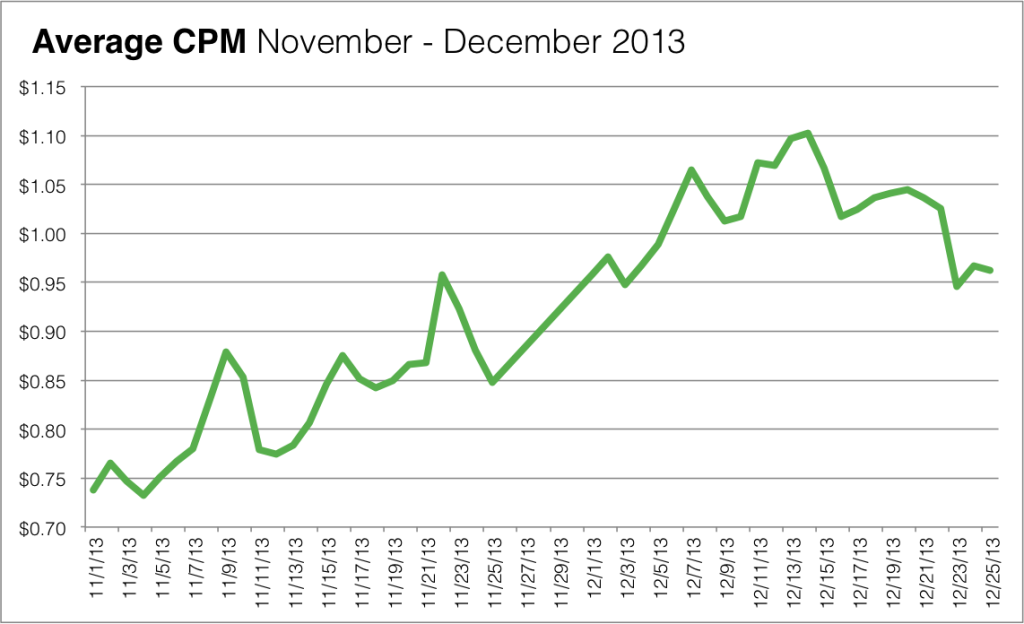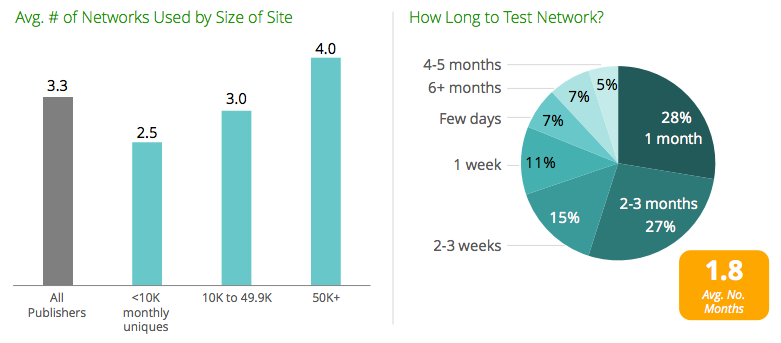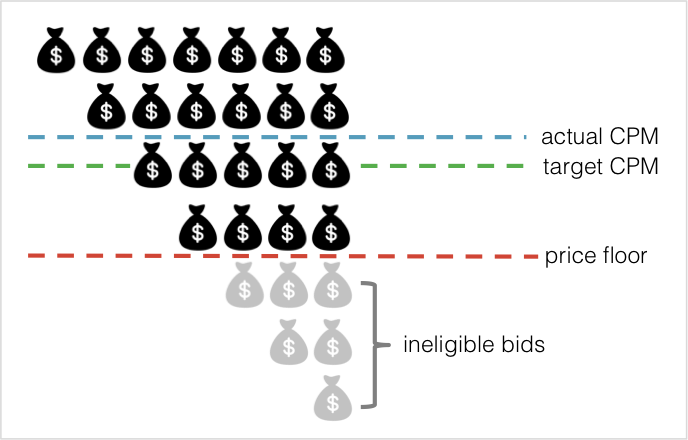This post was originally published on ClickZ.
Cashing in Holiday Digital Ad Spend is All About A Multi-Tag Approach
Right around the time when Christmas carols start to creep into unwilling ears each year, CPMs are beginning their steady march up, up and higher still throughout Q4. Ecommerce has entirely disrupted the path to purchase, particularly for holiday shoppers. During the 2013 holiday shopping season, retailers in the US saw half of the foot traffic they had seen in the year prior. With an even steeper drop-off expected in 2014, it’s safe to say that brick-and-mortar shopping is in crisis. For those who do choose to brave the traffic and hit the shops, digital interactions still influence 36 cents of every dollar spend in the retail store, about $1.1 trillion total.

These statistics have digital marketers, advertisers and publishers grinning from ear to ear, because the stolen market share from brick and mortar retailers has been multiplied many-fold and stuffed into the pockets of the online and mobile industry. The buck doesn’t stop at ecommerce publishers; food, lifestyle, home and garden, and fashion publishers are just a few of the other verticals that are riding the Q4 wave.
In 2013, sovrn’s average CPMs increased by over 50% between November and Christmas, while average fill rates increased by about 27%. With a projected year-over-year growth of about 27%, the stakes are high and rising for publishers eager to reap the benefits of the 2014 holiday season.
So this brings us to the natural question for our network of publishers in the throws of the holiday season: how do I cash in on the peak season?
It’s All About the Ad Stack
The surplus of traffic and buying intention from online audiences raise the stakes for advertisers and brands during the holidays. Unfortunately many publishers make the mistake of sitting back and expecting that they will naturally reap the benefits of buyer spending in Q4. While this approach may work for some, the more active you are in closely managing your stack during the holidays, the greater the rewards.

Do you have enough partners? A simple yet effective approach is to leverage multiple ad networks. The right number of partners in your stack is mostly dependent on your page views. Higher traffic sites with a dedicated ad operations team generally work with four or more networks, while publishers with little or no staff have only one or two. That said, as with any bidding environment, additional buyers increases the competition for your inventory and enables you to get the most revenue for your highest quality traffic. Now is the time to make some decisions about the right number of partners for your site and lean towards more when you can.
Measure their eCPM – each of the networks in your stack will have varying combinations of high fill and low CPM or visa versa. To make decisions about how to organize your chain, closely examine the partners in your stack and analyze their eCPM (fill rate x CPM), not just CPM or fill rate alone. eCPM also refers to campaigns that are monetized using CPC or CPA cost models.
Along with this analysis, look into the yield of your individual ad zones. This will affect your decisions about modifying ad zones on your sites. For example, is it better to use one 300×600 unit or two 300x250s? The answer to this question will vary. If your main focus is to max out revenue, you will likely choose two 300x250s. For those who are more concerned about the look and feel of their site, one unit may be easier on the eyes, albeit less lucrative. It’s also judicious in some cases to test multiple partners through multiple ad zones. Each prioritization algorithm could lead to varying results of each individual ad zone instead of judging the zone on it’s own. The same is true of publishers that have larger scale sites with multiple sections. Ad zones and ad provider results could vary from zone to zone as well as section to section, and any combination.
Consider increasing price floors. The holiday season brings higher average CPMs across the board, so many publishers use this opportunity to increase their price floors. If you are also considering a floor price bump, make sure to take a look at fill rate first. CPM and fill rate have an inverse relationship, so a very high fill rate is an indicator that a particular tag’s floor can be safely increased. Select tags with lower CPMs and high fill rates and increase those floors in gradual increments to find the right floors. A too-drastic increase in the floor can sometimes hurt revenue more than help by potentially cannibalizing fill rate. Remember that a price floor is not your target CPM, rather the lowest price you are willing to accept from a given network. Raising the floor can limit the number of auctions held for your inventory, so it’s important to understand the performance of each network you are passing to before making changes.

Confirm that your domain is being passed transparently. For publishers using ad servers, sometimes the domain being passed through their tags is replaced with a generic ad server call. The site domain is extremely important for monetizing ad calls due to all of the vertical, location and cookie data that comes along with it, therefore the loss of your domain in an ad call can significantly impact yield.
Publishers using ad servers should also utilize frequency caps and day parting when possible.
Don’t overdo it with your ad zones. A natural approach to increasing ad revenue during the holidays is to bump up the number of ad zones on your high traffic pages. If you take this approach, keep in mind that the industry max for ad zones on a page is 3-5. With additional stress on your site due to increased holiday traffic, too many tags can cause issues with latency and fill, therefore negatively affecting yield instead of positively.
Monitor performance. Keep a close eye on your tag performance throughout Q4. Particularly when making changes like increasing price floors or adding zones, as always, it can take some additional adjustments to hit the sweet spot for performance.
When ramping up your monetization strategy for Q4, it’s important to note that there are no silver bullets. At the end of the day, it’s all about identifying potential areas for growth and being open to the possibility and probability of change. Use multiple methods, be diligent and stick with it. In addition to optimizing your ad stack, there are many other areas of opportunity, like mobile-specific tags, video tags, native ads, direct deals and affiliate marketing, to name a few. There is no shortage of options for revenue.
When it comes to holiday monetization, if you can successfully pinpoint your areas of potential growth, identify your goals and act on them, there’s no reason why you can’t be part of the trend of up and to the right.
Cashing in on Holiday Digital Ad Spend Is All About a Multi-Tag Approach
sovrnmarketing // December 15, 2014

